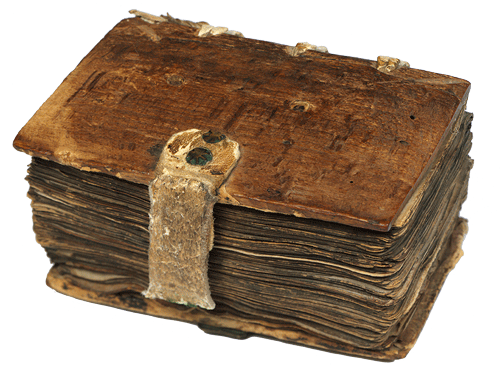Magna Carta
June 2015 marks the 800th anniversary of the signing of the Magna Carta by King John at Runnymede on the banks of the Thames.
The Magna Carta, regarded by many as the foundation of legal practice in England, has been a major influence on the development of democracy in countries around the world. In 1225 King Henry III reissued a much-revised version, and it was not until 1297 that the charter was enrolled on the statute books by King Edward I.
Edward’s 1297 statute is the version of the Magna Carta recognised by English law today. It includes the famous clause 29:
No free man shall be seized or imprisoned, or stripped of his rights or possessions, or outlawed or exiled, or deprived of his standing in any other way, nor will we proceed with force against him, or send others to do so, except by the lawful judgement of his equals or by the law of the land.
The Library has a copy of the 1297 statute, which was bound in a unique volume with 20 other statutes in about 1330. Approximately 10 cm long, it remains in the original bindings with scraps of skin attached to the rough wooden boards. The text is handwritten on vellum in a mixture of Latin and French, with a few decorated initials. The volume also includes the Charter of the Forest, a companion document to the Magna Carta, which provided a right of common access to royal lands. Clause 10 of the Charter of the Forest repealed the death penalty for capturing venison.
The size and contents of this volume suggest it belonged to a practising lawyer, who would have carried it as he travelled around the courts of England and Wales. The pages have been well thumbed and there is evidence of water damage.
English landowner Nelson Moore Richardson bequeathed the volume to the Library in 1926 along with a collection of bibles and early manuscripts. Richardson presented the collection in honour of Australian troops who supported Britain in the First World War. ‘We have liked them and the Australians so much,’ he wrote, ‘that it occurred to us that it would show in a small way our appreciation of the Australians and the noble way in which they have come forward to help us in this war, and all the sacrifices they have made, if we were to arrange that these bibles should eventually find a home in Australia.’
At the anniversary of the signing of the Magna Carta, the Library’s 1297 copy of the statute has been digitised and is available on our website. The volume will be on display in the Amaze Gallery and a number of public programs will recognise the Magna Carta as among the most influential documents in legal history.
List of clauses:
Leaf 1. Magna Charta Ed. son. of Hen. [1297]
Leaf 10b. Carta de Foresta. Ed. 1 [25 Ed. I]
Leaf 16. Statutum de Merton, 25 Hen. III
Leaf 21b. Stat de Martelberge, 52 Hen. III
Leaf 37b. Stat. Westminster I, 3 Ed. I
Leaf 67b. Stat. Gloucester
Leaf 78b. Explanationes Gloucester.
Leaf 79b. Stat. Westminster II, 121 Ed. I
Leaf 150b. Stat. Westminster III, 18 Ed. I
Leaf 152. Modus faciendi homag.
Leaf 153b. Stat de religiosis, 7 Ed. I
Leaf 155b. Stat. de conjuncto feoffamento, 33 Ed. I
Leaf 160. Modus calump...,
Leaf 161b. Dies communes in banco
Leaf 162b. Prerogativa Regis
Leaf 169b. Stat. Norhampton, 1328, 2 Ed. III
Leaf 181. Visus Franci plagu
Leaf 183. Stat Wynton, 13 Ed. I
Leaf 190. Articuli Wynton, 13 Ed. I
Leaf 191b. Stat. de Mercatoribus, 11 Ed. I
Leaf 196b. Stat. de bigamis, 4 Ed. I.


